| |
|
|
Botanical Name |
: |
Calotropis procera R.BR. |
English
Name |
: |
Swallow Wart, Milkweed, Dead Sea Apple and Sodom Apple |
Synonym(s) |
: |
Calotropis hamiltonii Wight., Asclepias procera Willd. |
Family |
: |
Asclepiadaceae |
| |
General Info
| Description |
 |
|
Erect, tall, large, much branched and perennial shrubs or small trees that grow to a height of 5.4 m., with milky latex throughout. Bark is soft and corky. Branches stout, terete with fine appressed cottony pubescence (especially on young). Leaves sub-sessile, opposite, decusate, broadly ovate-oblong, elliptic or obovate, acute, thick, glaucous, green, covered with fine cottony pubescent hair on young but glabrous later and base cordate. Flowers in umbellate-cymes and tomentose on young. Calyx glabrous, ovate and acute. Corolla glabrous, lobes errect, ovate, acute, coronal scales 5-6, latterly compressed and equally of exceeding the staminal column. Folicles are sub-globose or ellipsoid or ovoid. Seeds broadly ovate, acute, flattened, minutely tomentose, brown coloured and silky coma is 3.2 cm long. |
| Herb Effects |
 |
|
Expectorant, stimulant and diaphoretic (root bark); anticancer and stimulates the cardiovascular system and respiration (root and leaf); induces vomiting (in large doses); tonic, appetiser, stomachic (flower). |
Chemistry
| Active Ingredients |
 |
|
Taraxasterol and its y-isomer, taraxasteryl isovalerate, taraxasteryl acetate, giganteol, gigantin, isogiganteol and a wax (root bark); calotoxin, uscharidin and uscharin (plant and latex); alpha and beta-amyrin and beta-sitosterol (root bark and plant). |
| Chemistry
of Active Ingredients |
 |
|
|
 |
Name |
CAS# |
IUPAC Name |
Formula |
Structure |
 |
|
| Taraxasteryl acetate |
6426-43-3 |
(4,4,6a,6b,8a,12,14b
-heptamethyl-11-meth
ylidene-1,2,3,4a,5,6
,6a,7,8,9,
10,12,12
a,13,14,14a-hexadeca
hydropicen-3-yl)
acetate |
C32H52O2 |
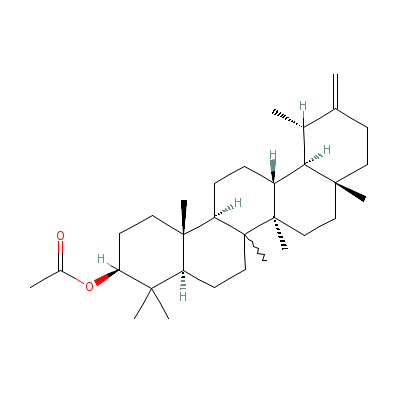
|
| Calotoxin |
20304-49-8 |
Not Available |
C29H40O10 |
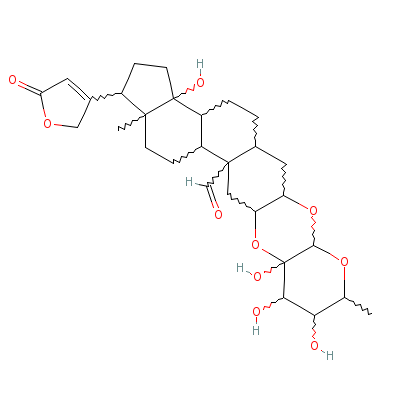
|
| Uscharidin |
24321-47-9 |
Not Available |
C29H38O9 |
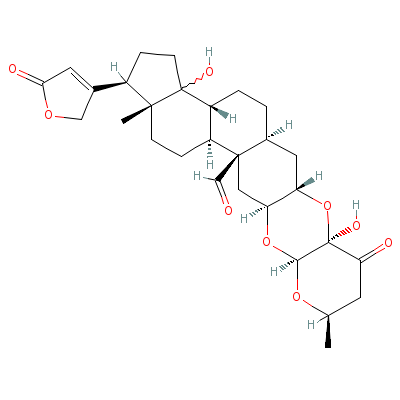
|
| Beta-sitosterol |
5779-62-4 |
17-(5-ethyl-6-methyl
-heptan-2-yl)-10,13-
dimethyl-2,3,4,7,8,9
,11,12,14,
15,16,17
-dodecahydro-1H-cycl
openta[a]phenanthren
-3-ol |
C29H50O |
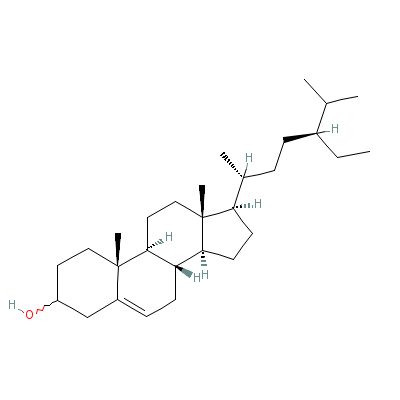
|
| Taraxasterol |
1059-14-9 |
4,4,6a,6b,8a,12,14b-
heptamethyl-11-methy
lidene-1,2,3,4a,5,6,
6a,7,8,9,1
0,12,12a
,13,14,14a-hexadecah
ydropicen-3-ol |
C30H50O |
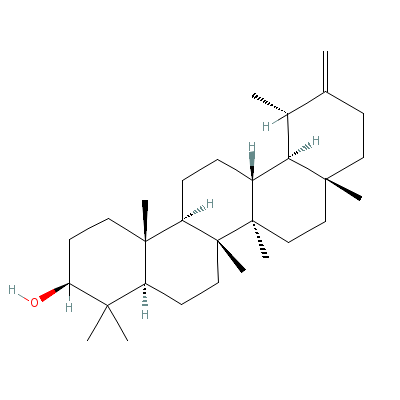
|
| Calotoxin |
20304-49-8 |
Not Available |
C29H40O10 |

|
| alpha-Amyrin |
638-95-9 |
4,4,6a,6b,8a,11,12,1
4b-octamethyl-2,3,4a
,5,6,7,8,9,10,11,12,
12a,14,14a
-tetrade
cahydro-1H-picen-3-o
l |
C30H50O |
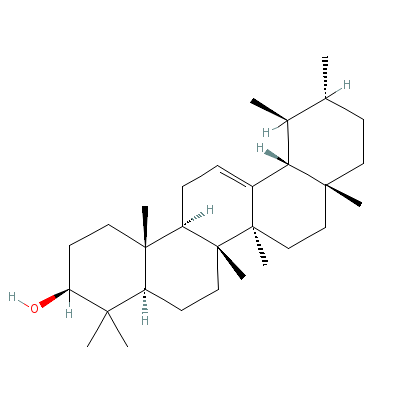
|
| beta-Amyrin |
559-70-6 |
4,4,6a,6b,8a,11,11,1
4b-octamethyl-1,2,3,
4a,5,6,7,8,9,10,12,1
2a,14,14a-
tetradec
ahydropicen-3-ol |
C30H50O |
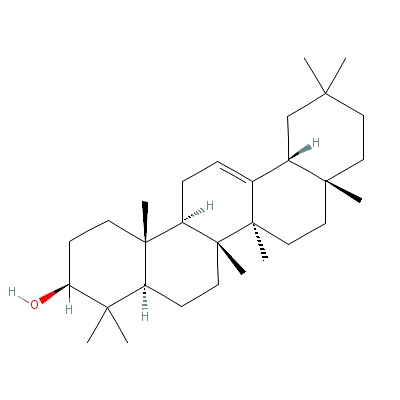
|
| Beta-sitosterol |
5779-62-4 |
17-(5-ethyl-6-methyl
-heptan-2-yl)-10,13-
dimethyl-2,3,4,7,8,9
,11,12,14,
15,16,17
-dodecahydro-1H-cycl
openta[a]phenanthren
-3-ol |
C29H50O |

|
|
Pharmacology
| Medicinal Use |
 |
|
Dysentery, diarrhea, indigestion, reducing fever, leprosy, skin diseases and eczema (root bark); cough, cold and asthma (flower and root bark); toothache (latex); rheumatism and syphilis; to relieve stomach pain (leaves); cures piles, asthma, cholera and wounds (flowers). |
| Contraindication |
 |
|
Large doses cause vomiting and diarrhoea. |
| Reference |
 |
|
 Chandel et al., Biodiversity in Medicinal and Aromatic Plants in India. Chandel et al., Biodiversity in Medicinal and Aromatic Plants in India.
Uniyal et al., Medicinal Flora of Garhwal Himalayas.
Bentley and Trimen, Medicinal Plants.
The Himalaya Drug Company.
|
Dealers
Products
|
|